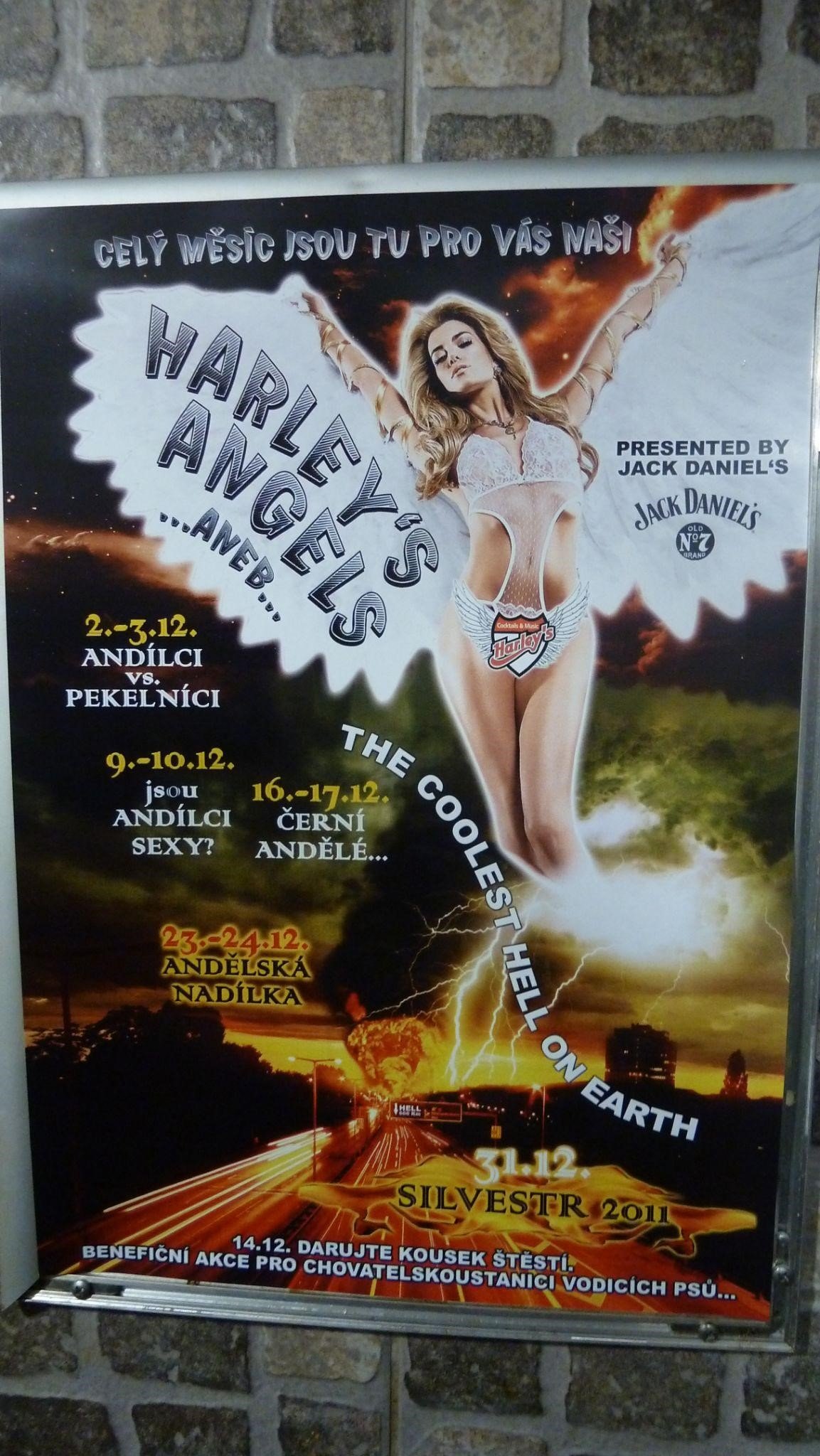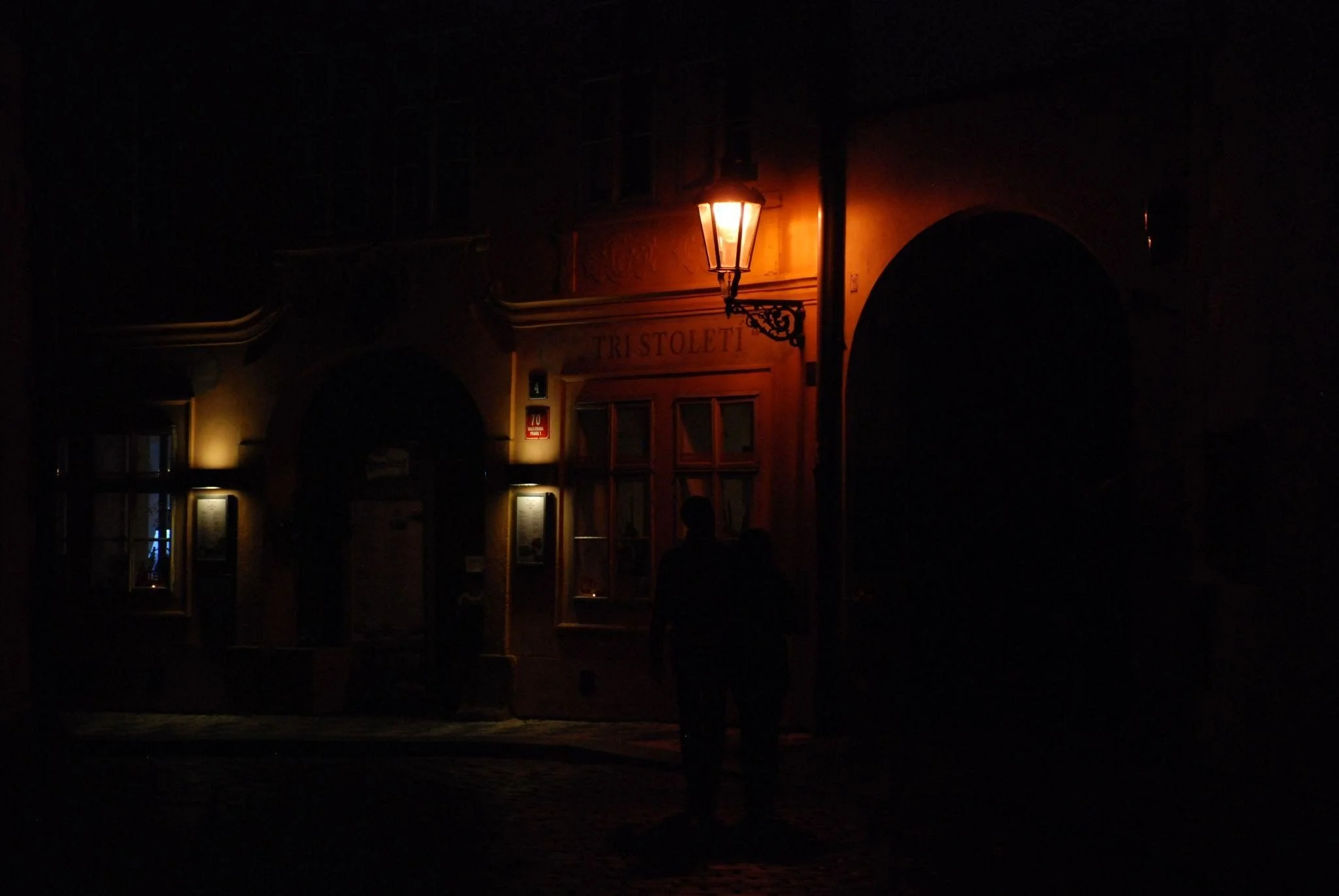Legal but unregulated, the Czech sex industry leaves workers vulnerable to exploitation, abuse and trafficking.
A poster promoting sex in Prague. A. Curell. CC BY-NC 2.0
The grim specter of sexual slavery still lingers in the underbelly of many Eastern European capitals. Prague, the capital of the Czech Republic, is no exception. Despite the world's fascination with Czechia's natural landscapes and medieval castles, the city remains home to thousands of women trapped in the grips of human trafficking, specifically forced sexwork, while their basic human rights are stripped away and their voices silenced. While a thriving sex industry has bolstered the country's economy since the Velvet Revolution of 1989, it's a complex issue that requires attention. In 2019, estimates suggested that between 12,000 to 13,000 women worked in the country’s sex industry, with many being victims of trafficking or coercion. It's important to differentiate between sex work which involves consensual engagement in commercial sex, and sex work which involves force, coercion, or deceit. In the Czech Republic, all sex work is permissible under the law, meaning the issue of consent often operates in a gray area leaving sex workers are vulnerable to discrimination, abuse and sex trafficking.
In fact, a thriving sex industry has been a mainstay of the country’s economy since the Velvet Revolution of 1989, when the Czech and Slovak peoples overthrew their communist dictatorship before peacefully splitting up into the contemporary Czech and Slovak states. In 2008 The New York Times revealed the sex industry in the Czech Republic was raking in more than $500 million in annual revenues, with 60 percent of that coming from foreign visitors. It is a booming business that continues to thrive. According to some estimates, 12,000 to 13,000 women worked as sex workers in the Czech Republic in 2019, making the industry a significant source of employment. But who does this employment truly benefit?
The history of sex work in Czechia is a complicated story that stretches back decades. The early of the 20th century brought a period of tremendous upheaval, as the world underwent rapid changes in population, urbanization, and political power. World War I led to the creation of an independent Czecho-Slovak state for the first time in centuries, and the age of machines brought with it unparalleled economic growth. Unfortunately, these shifts also paved the way for a spike in the trafficking of women and girls, with many of the victims being brought in from other European countries.
In the nineteenth and twentieth centuries, state regulation was the dominant way authorities dealt with the sex industry in Europe, with governments implementing mandatory health checks, police surveillance, and registering sex workers. While sex work remains legal in most European Union countries, a select few—France, Sweden, and Ireland—have implemented the Nordic model of neo-abolitionism, which decriminalizes sex workers but prohibits buying sex.
The Czech Republic’s attitude towards the dangers of an unregulated sex industry has long been ambiguous. While the industry was recognized in 2010, no legal framework was put in place. As a result, sex work is legal but remains largely unregulated. On the policy level, the legal status of sex work has been a highly contentious issue in Czechia, with no clear consensus among politicians or the public.
The reality is that paying for sex is a prevalent practice throughout the country, with Prague and the western and northern Bohemia regions on the German and Austria borders serving as hotspots for brothels. Prague's “Red Light Districts” can be found through online guides, offering access to a trade in sexual services. While seemingly legal, the unregulated sex market in Czechia is a breeding ground for exploitation and abuse. Although the sale and purchase of sexual services by adult sex workers over 18 are not illegal, crimes such as pimping, trafficking, and brothel operations are punishable offenses. Moreover, institutions like ShowParks, the largest de facto brothel in Prague, operate under a cloak of legal ambiguity. By renting apartments to young women with no questions asked, the owners of ShowParks skirt the law, leaving the activities that take place between the walls of rented rooms entirely up to the discretion of women and their clients, or in a worst-case scenario, pimps who sexually and financially exploit sex workers with no questions asked.
Prague by night. Schaffhauser Balázs. CC BY-NC-ND 2.0.
According to a Czech journalist who investigated Charles Square sex workers, women charge as little as $45 (CZK1000) for vaginal sex and $25 (CZK500) for oral sex. But many of these women are not in control of their earnings, as they rely on business operators or managers who take a hefty cut of their income. For many sex workers facing dire living conditions and scant economic prospects, the sex industry is a last resort to cope with the harsh realities of poverty and instability. Around 60% of them shoulder the responsibilities of single motherhood, often caring for two or more children without state or paternal support. The situation speaks to the wider issue of poverty, gender inequality, and social exclusion faced by this underrepresented community. Though the Czech Republic has made progress in reducing poverty and social exclusion, persistent ethnic discrimination and socioeconomic inequality continue to impede improvement. For example, members of the Roma minority are at a much higher risk of poverty, which will likely require concrete government action to address. The lack of women represented in leadership roles is a persistent issue, with women holding only a quarter of national parliamentary seats in both the public and economic domains in the Czech Republic. According to Safarik, Czech women earn $329 (CZK 7,000) less per month on average than men.
The legal gray area surrounding the sex work in the Czech Republic also opens the door to one of its most sinister aspects: human trafficking. With the fall of communism in 1989, the sex trade gained access to fresh resources, both geographical and human, that enabled the exploitation of women from Eastern Europe. According to the 2022 Trafficking in Persons Report from Romania and Czech Republic, the Czech government has only limited data collection and uses narrow criteria for identifying trafficking victims, which has led to a significant undercounting of the true number of victims. Women from countries such as Ukraine, Romania, and Vietnam are often forced into sex work in the Czech Republic and then transported to other parts of Europe for further exploitation.
Meanwhile, men and women from countries such as Russia and Thailand are at risk of being forced into labor in industries such as construction and agriculture in Czechia and are frequently trafficked through the country to other parts of the European Union. Most recently, as the conflict in Ukraine rages on, an alarming trend has emerged in the Czech Republic: human traffickers taking advantage of vulnerable individuals. With the displacement of over 8 million Ukrainians, 80% of whom are women, UN Secretary General António Guterres recently warned that women and children are being targeted by these traffickers. A report by Czech outlet Lidovky revealed that some pimps in the Czech Republic are luring Ukrainian refugee women into forced sex work. The pimps are said to be targeting young mothers, whom they consider to be a “safer” option.
Destigmatizing and decriminalizing sex work, while respecting individual choice is a policy recommended by many human rights organizations. The Czech Parliament has considered reform bills which propose extensive regulation of the sex industry, although the issue remains unresolved. Reform efforts have prioritized clients and public order over the safety of sex workers. Ongoing impartial and qualified research on sex work and migration is crucial for determining the next steps forward in providing social welfare to all professions, including the sex industry.
To Get Involved:
Click here to discover Urban Justice Center Sex Workers Project, a US national organization that provides free legal services, education, research, and policy advocacy to destigmatize and decriminalize sex workers and to defend their human rights.
Click here to discover European Sex Workers Rights Alliance (ESWA), a network led by sex workers representing over 100 organizations across 30 countries in Europe and Central Asia. Their goal is to create a sustainable network for national, regional, and international advocacy activities that drive long-term, systemic change.
Hope Zhu
Hope is a Chinese international student at Wake Forest University in North Carolina studying sociology, statistics, and journalism. She dreams of traveling around the globe as a freelance reporter while touching on a wide range of social issues from education inequality to cultural diversity. Passionate about environmental issues and learning about other cultures, she is eager to explore the globe. In her free time, she enjoys cooking Asian cuisine, reading, and theater.












